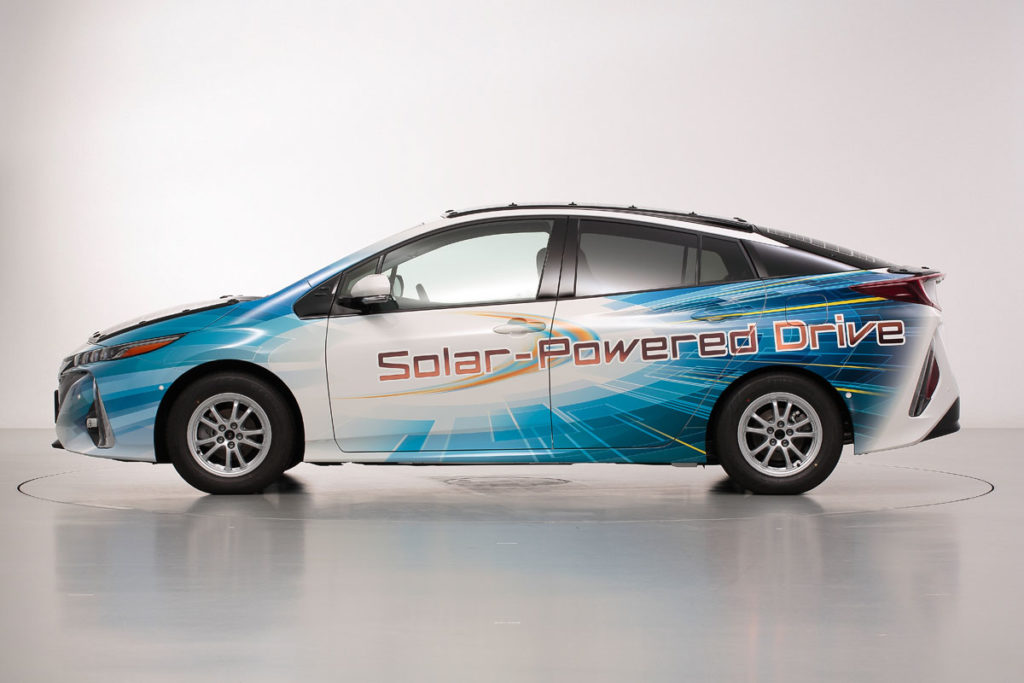Following Hyundai Motor Group and the sensational 500 miles range Lightyear One EV, it was revealed that Toyota has begun testing a new solar-powered Prius. In partnership with Sharp Corporation and Japanese government agency for research of environmental and energy technology NEDO, a Toyota Prius Plug-in Hybrid Vehicle (PHV) is outfitted with solar panels on its hood, roof, the rear spanning what use to be a rear windscreen, as well as other parts of the car.

The trial will see the demo car plying the public roads in Tokyo area to determine the cruising range and fuel efficiency of the car. If you haven’t heard. This is not the first. There was a Prius PHV with solar charging system previously, but this new model is equipped with new and improved solar panels that is able to achieve a conversion efficiency of over 34 percent and generates 860 watts of power. The benefit is obvious. If this solar panel on a car pans out, it will provide the vehicle with improved electric range.
Speaking of electric range, the new Prius PHV with solar charging system is projected to have a BEV-mode cruising range of “equivalent to 44.5 kilometers” (about 27.7 miles) whereas the former version makes a modest 6.1 kilometers (3.8 miles) in scenario in which it is parked all day. If the vehicle is in motion, it is expected to have a BEV-mode cruising range of around 56.3 kilometers (35 miles).

It is worthy to note that the previous model is not able to improve the BEV range of the car when it is being driven. Instead, the charge is directed to top the auxiliary battery that powered the car’s equipment such as the navigation system. The solar panel used on the car is a modularized version of its high-efficiency solar battery cells previously developed for a NEDO-led project.
Interestingly, this solar panel system not only charges the battery when the car is being driven, but it also charges while the vehicle is parked. Having said that, if we could eventually find a way to maximizing solar charging, it may help to dispel the worry that many people had with regards to PHV or EV and that is battery dying on them (and not being able to get it topped as fast and as conveniently as fossil fuel automobiles).
Even better, if the solar route is as efficiency, we may not need so many charging stations to support the growing number of PHV and EV on the roads in future.
Images: Toyota.
Source: inhabitat.





